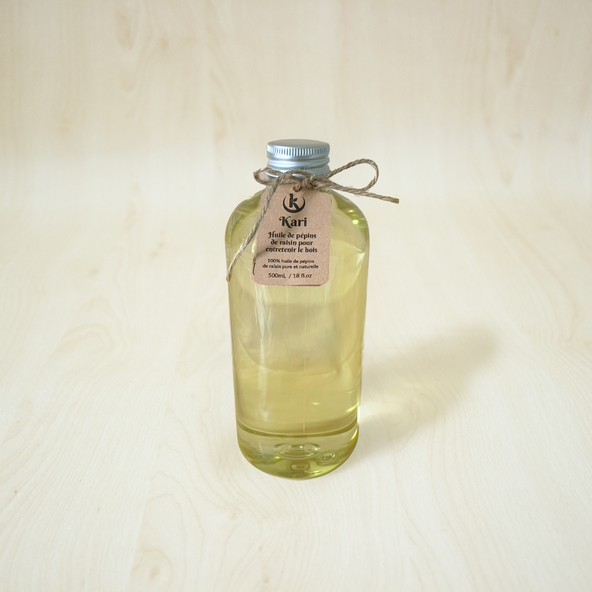How to preserve your kuksa?
If you're reading this article, it's likely that you already own one or more kuksa, or that you're about to get one. In this article, I'm going to advise you on the day-to-day maintenance of your cup to avoid any problems, such as discoloration caused by food.

Anne-Laure Compain
The first uses of your kuksa
What do I do when I receive my kuksa?
When you receive your kuksa, don't use it straight away, as you risk damaging it. During transport from our workshop to your home, the wood has been cold; in fact, when you take your kuksa in your hands, you'll notice this. If you pour yourself a cup of tea or coffee while the wood is cold, you'll weaken the wood and risk cracking it.
All you need to do is wait for the wood to come back to room temperature, and to make sure it's thoroughly warmed up, run your kuksa under lukewarm water before pouring yourself a hot drink.
Why does my kuksa taste salty?
When you first use your kuksa, you may experience :
- A taste of salt
- A layer of salt in the bottom of your kuksa
Don't panic, it's normal! Salt is a natural part of the kuksa manufacturing process, used to solidify the wood.
The only way to get all the salt out of your cup is to use it. After a few weeks, your kuksa will have lost its salty taste, and you'll be able to enjoy your beverages to the full.
Choose hot drinks to help bring out the salt in your kuksa.
How to extend the life of your kuksa?
It's not complicated to keep your kuksa intact for years, you just need to know the right things to do. First and foremost, here are the most important points:
- Never put a kuksa in the dishwasher.
- Do not wash a kuksa in boiling water.
- Do not soak a kuksa in water.
- Do not wash a kuksa with conventional washing-up liquid
- Do not use an abrasive sponge to clean a kuksa.
Cleaning your kuksa naturally
There are several natural products that can be used to clean your kuksa. You'll need a non-acidic product with no artificial fragrances or detergents. You can use a mild honey soap, black soap or organic dishwashing liquid. Use a soft, non-abrasive sponge to avoid scratching the surface of the cup, and lukewarm water, as wood doesn't like hot water and cold water doesn't remove microbes.
Find out more about cleaning wooden tableware here.
Once washed, you should dry your kuksa immediately with a dry cloth. Never leave a wooden object to dry in the open air, otherwise it will absorb all the water and moisture and warp.
Maintaining your kuksa with oil
Once you've washed and dried your kuksa, you'll notice that the wood has turned slightly white. This is normal, and you need to nourish it with an oil to make it shine again!
But which oil should you choose? Here's a list of oils we recommend you use:
- Grapeseed oil is easy to obtain, edible, odorless and quick-drying! It's very practical for your kuksa.
- Beeswax is a good alternative to oils and provides excellent wood protection.
- Linseed oil is a very greasy oil that will nourish your kuksa enormously, but it has a rather strong odor that may bother some people.
- Tung oil is a very nourishing oil for wood, protecting it from water, humidity, stains and UV rays.
- Danish oil is a blend of linseed oil, tung oil and safflower oil. It repels moisture and deeply nourishes the wood.
Discover our artisanal care products for preserving wood
See allRestoring a beautiful brown color to your kuksa
You'll find that certain foods will stain your kuksa, and I'm thinking particularly of red fruits like raspberries or blueberries! But don't worry, this article explains how to remove the stain.
In the example below, you can see a before-and-after photo of a kuksa stained by red fruit.

Example: Cleaning a kuksa stained with fresh fruit
The video below shows you step-by-step how to restore your cup's beautiful brown color and remove all stains.
Treating the inside of the kuksa
The most natural and traditional way to treat the interior of your kuksa is to use coffee grounds! Coffee grounds will make the cup waterproof and prevent it from cracking when it dries. I'm actually detailing all the steps right below! ⬇️

Coffee infusion
Let hot coffee brew in your cup for a few minutes.
This step solidifies your cup and strengthens the wood.
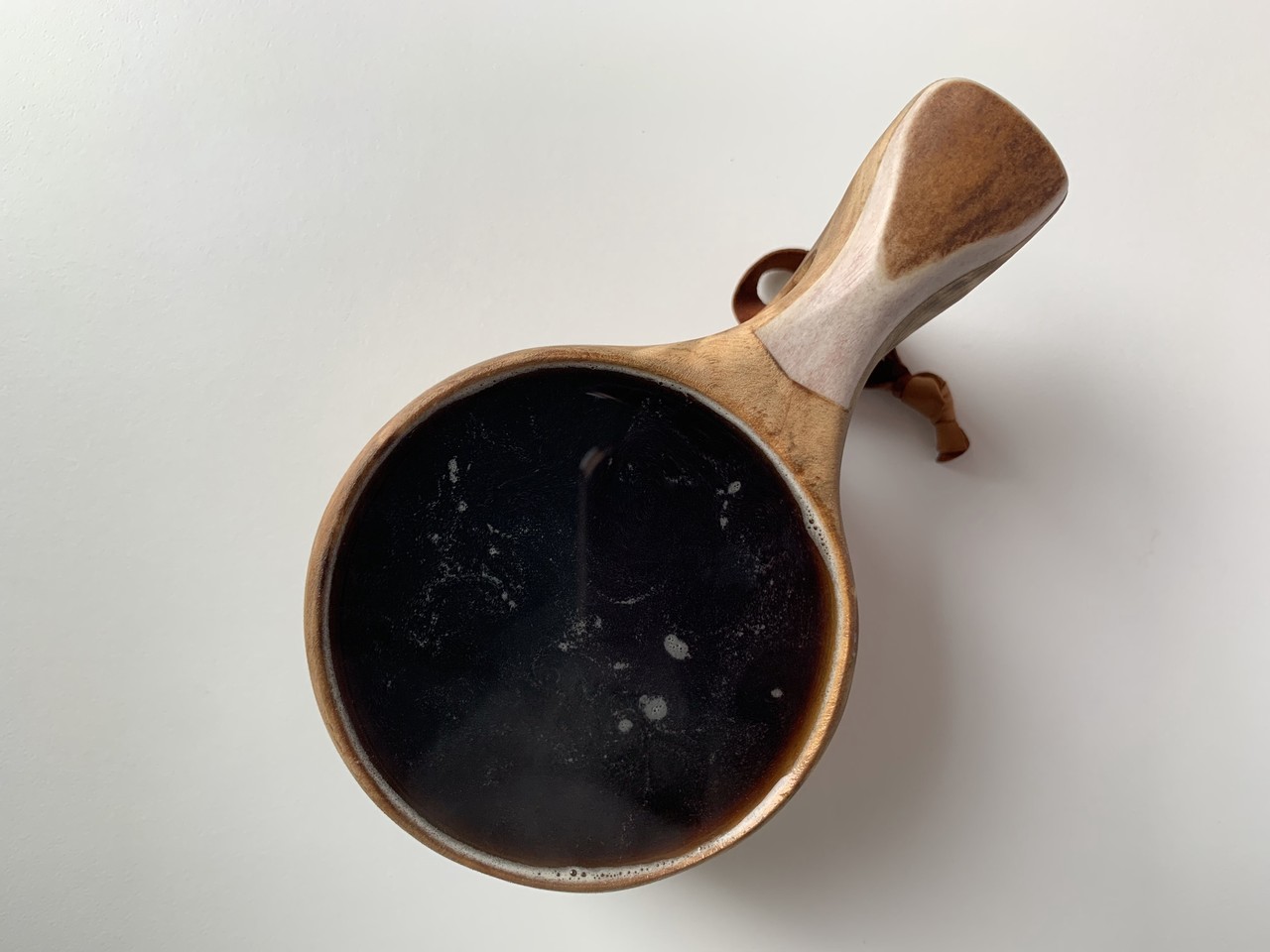
Drying
Empty the coffee that was in the kuksa and let your cup dry for a short hour.
The drying will expand the pores of the wood and help for the next step.
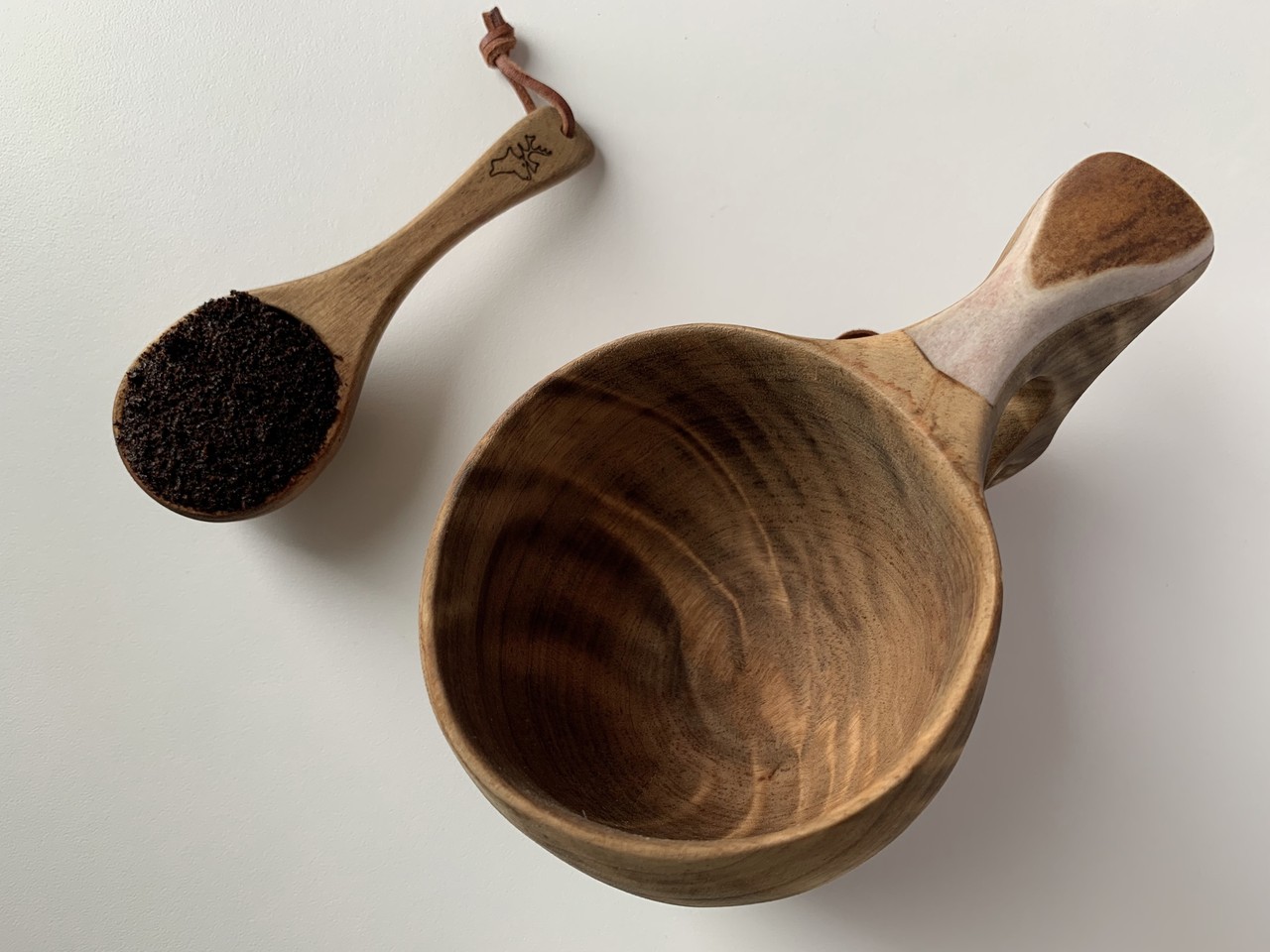
Adding the coffee grounds
Once the kuksa is dry, take some hot, wet coffee grounds and rub them on the sides of the cup. Leave it on for 3-5 minutes, until the coffee grounds get into the pores of the wood.

Waterproof film
The coffee grounds, once absorbed by the wood, will form a greasy waterproof film. This will prevent the kuksa from cracking when dry.
Remove the excess coffee grounds with a cloth.
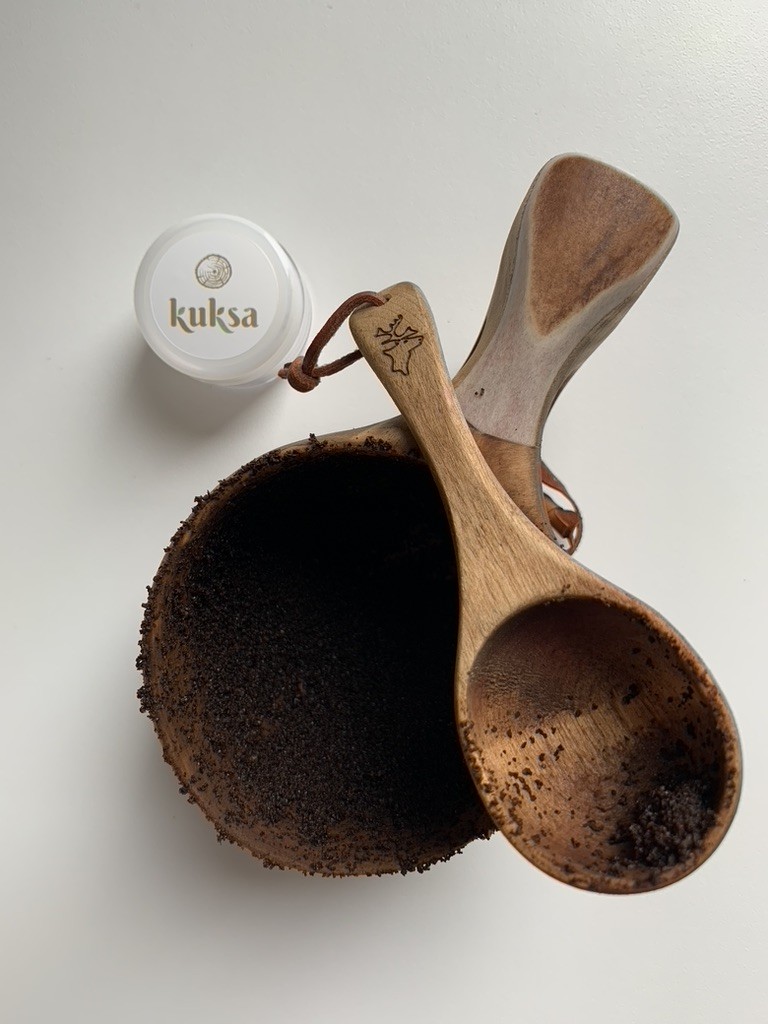
Soak up the essence of Finnish craftsmanship as you explore the history and manufacture of this traditional mug. By subscribing, you'll receive weekly updates on kuksa.
Treating the exterior of the kuksa
The oil is perfect for treating the outside of your cup because it is hardening. Indeed, it solidifies in contact with oxygen. The drying time of the oil varies according to the temperature and humidity of the room, it can take a few days or a few weeks!
The advantage of oiling your kuksa with oil is to make it more resistant. The oil penetrates into the pores of the wood and solidifies.

How to apply oil?
Brush the outside of your cup with a cloth or your fingers and let the wood absorb it for 1 hour. However, if you find that the wood is not saturated, you can add more oil to the missing spots. Then wipe off the excess oil.
To dry, place your kuksa in a well ventilated area. And, to accelerate the hardening, place it in a warmer place but with a very good air circulation.

Summary picture
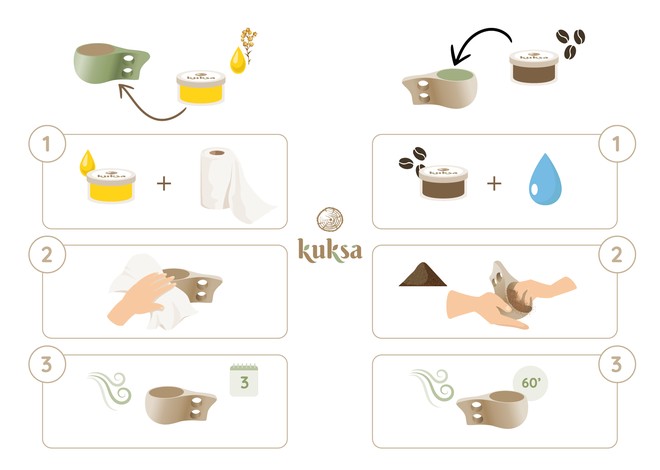
4 mistakes to avoid to extend the life of your kuksa
Kuksa can be damaged or cracked in a number of ways. So you need to take extra care every day.
Do not use dishwashing liquid on a kuksa
Dishwashing liquid will dry your kuksa. After use, rinse it only with clear water or wipe it with a dry cloth. And don't put it in the dishwasher, heat and humidity are what it hates!
Do not store a kuksa in an airtight place
Your kuksa is a natural product, it must breathe! If you put your wet kuksa in a backpack or a closet, for example, it will lack air and become moldy. I advise you to hang it in the open air in your bag!
Do not pour boiling water into a kuksa
Don't pour boiling water, which comes straight out of the kettle for example, right into the kuksa. Boiling water will damage the surface of the wood. Wait only a few seconds before pouring your water.
Do not soak alcohol in a kuksa
If you soak alcohol in your kuksa overnight or for a few hours, the wood may warp and split.
Baptize your kuksa like the Lapps
According to tradition, when you first use your kuksa, you have a little routine to follow:
- Pouring alcohol into your kuksa
- Turn it counter-clockwise
- Take a sip of alcohol
- Turn the alcohol in your kuksa counterclockwise
- Take another sip of alcohol
Warning: alcohol abuse is dangerous for your health

Unique wooden mugs for unforgettable moments
Start shopping now 🌿
Come and discover our wooden tableware from Finland. Handmade tableware that will accompany young and old alike for years to come!
A selection of products that have won over our customers ♥︎
Want to know more about kuksa?
You are passionate about kuksa, then these articles should also interest you.

Alexis Le Baron

Anne-Laure Compain
TYPES OF WOOD
Which wood should be used to make a kuksa?The traditional kuksa is made of birch burl, but it can be carved in other woods !

Anne-Laure Compain

Anne-Laure Compain

Anne-Laure Compain

Anne-Laure Compain
Subscribe to our newsletter and receive your discount code in your mailbox!




